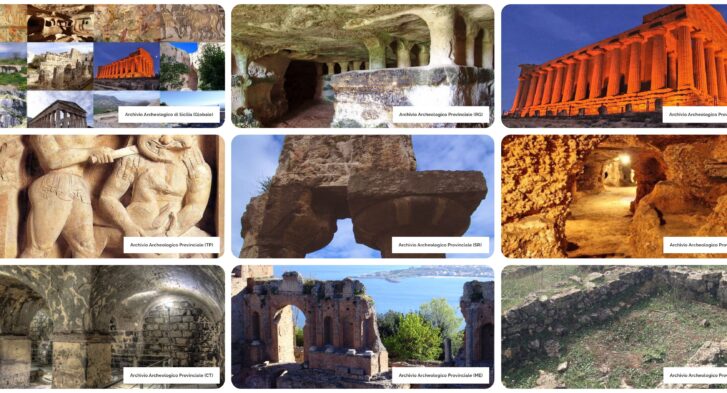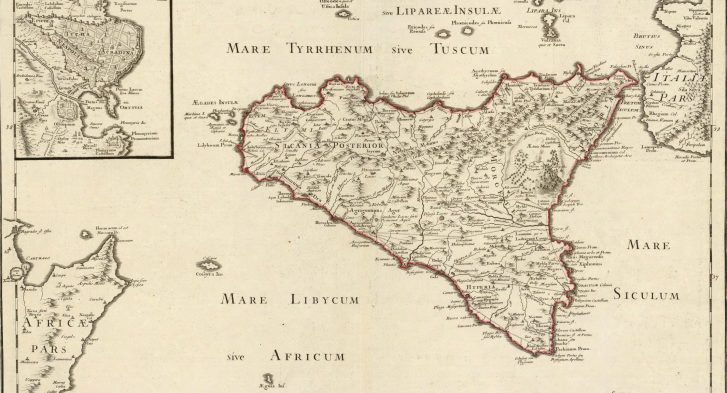The Sibyl of Lillibeo
Reference page: Repertory of Cults and Myths
Origins of the myth
The Sibyl is basically a priestess with prophetic virtues and there are many legends about her. Particularly famous was the Sibyl of Cuma, also known by the name of Amalthea, who lived in a cave and had the task of making known the oracles of Apollo.

Cerrini: Apollo and the Cumaean Sibyl, Berlin, Gemäldegalerie
It is said that Apollo, who fell in love with Amalthea, invited her to make a wish, she asked to be able to live as many years as the grains of sand she could hold in her hand, but forgetting to ask for youth at the same time. Apollo offered the Sibyl, in addition to what he had asked of him, even youth on condition that it was granted, but the Sibyl gave up in order not to lose her virginity. Thus, as the Sibyl grew older, her body dried up until, after about a thousand years, it dissolved into dust and her voice remained, which continued to utter the oracles of Apollo.
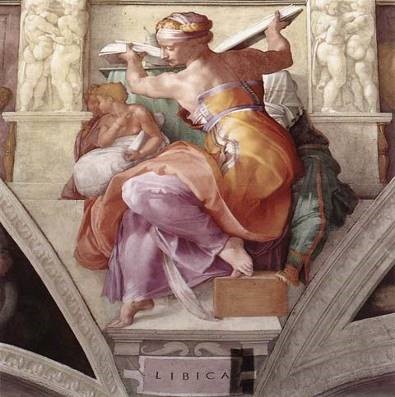
Michelangelo: Libyan Sibyl Rome - Sistine Chapel.
The cult of Sibyl of Cumae it was particularly flourishing in Rome, where the Sibylline books were consulted. According to tradition, these books were sold directly by the Sibyl to Tarquinio Prisco and would have been destroyed in the fire that broke out in the Campidoglio during the civil war between Mario and Silla.
The Myth in Sicily
In Sicily the Sibyl of Cuma was identified with the Sibyl of Lillibeo (today Marsala) where, in a cave it was said that she lived or was buried. Inside the cave there was a miraculous well, whoever drank its water became a fortune teller and was able to predict the future. Diodorus also speaks of this well in relation to the landing of Hannibal on the promontory of Lillibeo in 409 BC [Diodoro Siculo Lib XIII 54]. The Carthaginian army camped near the well of Lillibeo and, many years later, this was the name given to the city founded nearby.
The well of Lillibeo, therefore, was known even before the city of the same name was founded; it is probable that the place was originally the seat of a cult similar to that of the sibyls, and that only later, another one superimposed on it, identifiable with that of the Sibyl of Cumae.
The fact that the cult of Apollo was particularly felt in the place, of which the Sibyl was the priestess, also contributed to the localization of the Sibyl in Lillibeo, as evidenced by the same civic coat of arms of Marsala depicting Apollo with the lyre.
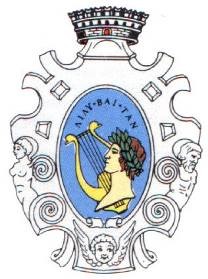
Coat of arms of Marsala
In a bronze coin from the Roman era, on one side, a tripod is wrapped around which a snake is wrapped (both are attributable to Apollo), on the other side the face of the Sibyl appears inside a triangle representing Sicily .
The cult of the Sibyl must have had a particular meaning throughout the region, if the foundation of Palermo is attributed to this figure, which took place before the Sibyl herself settled in Lillibeo.
In the cave of the Sibyl, or in its immediate vicinity, there was probably a temple dedicated to Apollo. This testifies how the Sibyl was comparable with the Pythia of the temple of Apollo in Delfo, only that the Pythia was actually a priestess in flesh and blood, while the Sibyl of Marsala was a non-corporeal figure, a spirit present in the cave that manifested itself through the water of the well.
Religious syncretism
With the arrival of the Christian religion, the cult of the Sibyl did not disappear, but was transformed into that of St. John. The Sibyl and St. John are linked by the exercise of prophecy, the first in honor of Apollo, the second in the name of Christ, and for both of them water takes on a miraculous meaning. The Sibyl offers the knowledge of the future through the water of the well, St. John offers the knowledge of God thanks to the baptism performed with water. In fact, the church of S. Giovanni Battista was built in 1576 above the cave of the Sibyl and a statue of the saint is even placed inside the cave, on what was perhaps the altar of Apollo.
It is said that the water from the well, normally brackish, became, for a single instant, sweet and clear, and even proved to be healthy for the sick [Giuseppe Pitrè: Feste Patronali in Sicilia p. 489]. The Sibyl was remembered in the rite of scutu (listening) that some women performed on the eve of the feast of St. John. These went to consult dear Sibilla who lived in the cave and questioned her about the fidelity of her husbands or, if unmarried, asked if they would get married the following year; in doing this they drank the water from the well, then some entered a sort of mystical delirium (perhaps due to the not too potable water!). The questions were asked aloud precisely on the opening of the well which, due to the characteristics of the place, favored an echo, which was appropriately interpreted by the applicants.
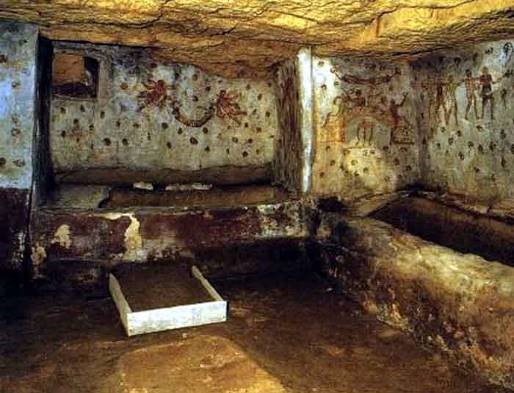
Sybil's Cave - Church of San Giovanni - Marsala (web)
A certain analogy with the ancient can be seen in the rite of the scutu Oracle of Claro, a small island in the Aegean Sea, home to one of Apollo's oracles. The oracle was illiterate. Those who went to consult him only uttered their own name, then he retired to a cave where he drank water from a mysterious spring and gave his response in hexameters [John Ferguson: The religions of the Roman Empire p. 136.].
Another strange custom took place in the cave of the Sibilla. On the occasion of the feast of St. John, many people went to be bled, even once there were up to 400 in one day. [Giuseppe Pitrè: Patronal Festivals in Sicily p. LVII.]
The intertwining between the pagan Sibyl of Apollo and the Prophet St. John continues in the story where it is said that, in the cave, St. John was seen who, with a weather vane in his hand, went around the well giving life and beneficial virtues. to its waters. Thanks to these waters they healed those sick who washed or drank in it while praying to the saint or plunged into it three times invoking the name of the Father, of the Son and of the Holy Spirit.
Popular belief has also attributed to this place the classic truvatura, that is, an enchanted treasure; it is said that on the night of St. John in the cave, for a lucky few, an enchanted fair takes place in which, for very little money, one can obtain large golden oranges.
The well is now closed to the faithful of S. Giovanni, in its place another one was built in front of the statue of the saint.
Marsala is not the only case in which the very ancient belief of the Sibyl has insinuated itself into a Christian religious context. An ancient tradition has it that in the Ragusa area, near Scicli, the last battle between Christians and Saracens took place and that the Madonna appeared, siding at the head of the Christians to defeat the Arab army. On the Saturday before Palm Sunday, considered the anniversary of her appearance, a sacred representation of the battle took place, in which the Madonna, in the guise of an Amazon warrior, intervened to help the Christians by massacring the Saracens.
At a certain point in the performance, three children climbed onto the stage, one of them dressed as an angel, the other two, in women's clothing, were called by the people scibilli (sibille); the Sibyls sang prophetic hymns in honor of the Savior Madonna and after them the angel intoned, in a very high voice, a chant whose initial strophes were:
Beautiful image uninvited! to you Reina,
Under white destrier, Scicli bows.
[Giuseppe Pitre: Sicilian Popular Shows and Festivals p.62.]
The Myth in the IWB Register of the Sicily Region
The places of the myth of the Sibilla Lillibetana have been included by the Sicily Region in the LIM Register (Places of Identity and Memory of Sicily), sector of the Places of Heroes and Heroic Legends.
The places concerned are:
- Cave of the Sybil, Church of an Giovanni (Marsala)
Extract from the Book ” Cults of Ancient Sicily” by Ignazio Caloggero ISBN: 9788832060102 © 2022 Centro Studi Helios srl




